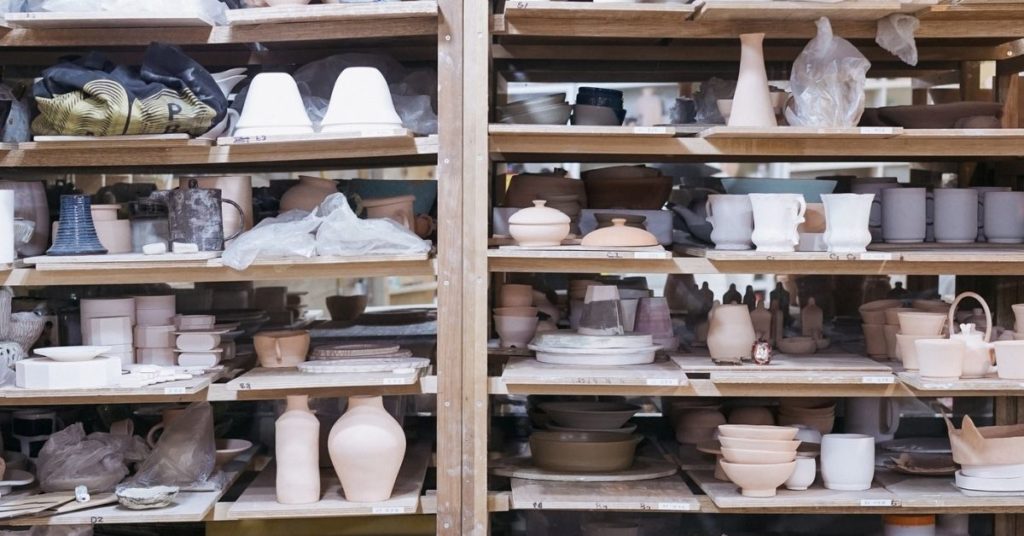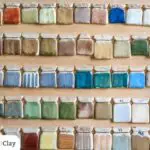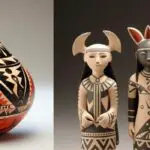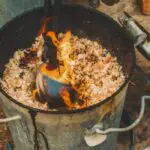So you’re ready to start your next pottery project? There are many factors to consider when choosing clay. And it can also be a bit daunting when you are first starting out and don’t know where to begin. In this article, we will guide you to picking the right clay for your upcoming project.
The type of clay
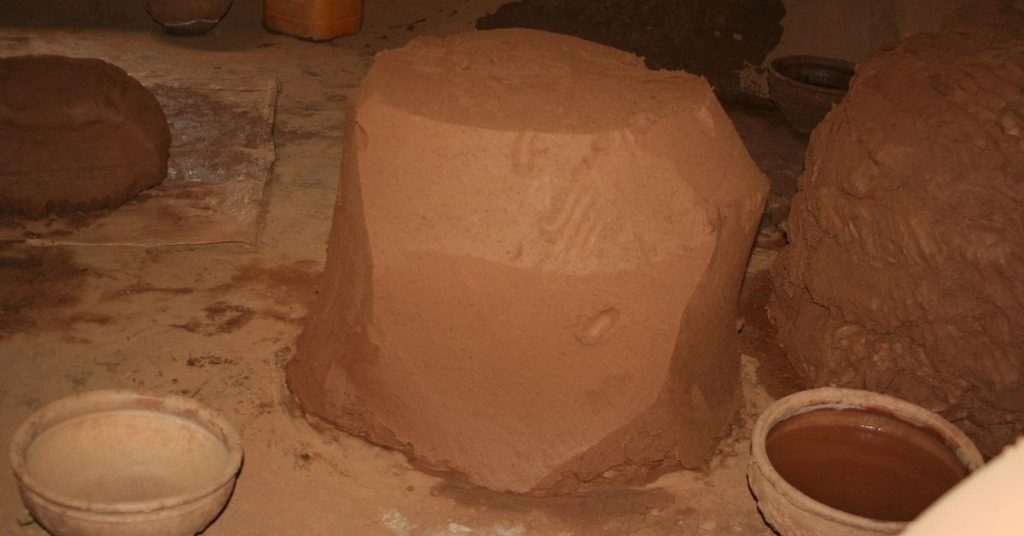
There are 4 types of clay that you might use in your pottery: Earthenware, stoneware, porcelain, and ball clay.
Each type of clay has different properties that will affect how your pottery turns out. You’ll need to choose the right type of clay for your project depending on the results you want to achieve. Here are notes on the three most popular.
Porcelain
Porcelain is soft which makes it easier to center if you use are throwing on a wheel. It also has more clay particles in the body. That means you can pull it and stretch it. These properties allow it to be used with thin and translucent shapes.
Porcelain can be a challenge to use for a beginner. It requires a lot of water. When you’re centering your clay on the wheel, you use water to get it placed right. And when you’re new to pottery, you’ll be attempting to center your clay many times thus using a lot of water. With all the added water, porcelain has a tendency to become soft and collapse. As a beginner, this can be very frustrating.
Earthenware
Earthenware is a low-fire clay, so it might be a good choice if the kiln available to you is limited.
It’s also plastic meaning earthenware is a cooperative material. The more plastic clay is, the easier it is to shape. And with earthenware, the clay will hold its shape after being formed. This can be quite helpful to someone new at pottery and who is taking their time.
Earthenware has a rough, celebrated characteristic in ceramic arts. Commonly, you’ll find utilitarian uses of earthenware like outdoor pottery for plants and gardens.
One drawback to earthenware is its porous nature. You can’t use your finished earthenware piece for storing or holding liquids without glazing it.
Stoneware
Same as earthenware, stoneware is a plastic, cooperative clay. It’s easy to shape and form with the material. Unlike earthenware, stoneware is nonporous after it’s fired. You can store liquids without firing. Plus, stoneware is a sturdier material than its porcelain and earthenware counterparts.
My recommendation for beginners
I recommend stoneware for a beginner. Its plastic nature and nonporous properties after firing remove some of the unknowns that come with ceramics. You can branch out into earthenware as the next easiest to work with. Then, finally, try porcelain.
What is clay grog and how will it affect your decision?
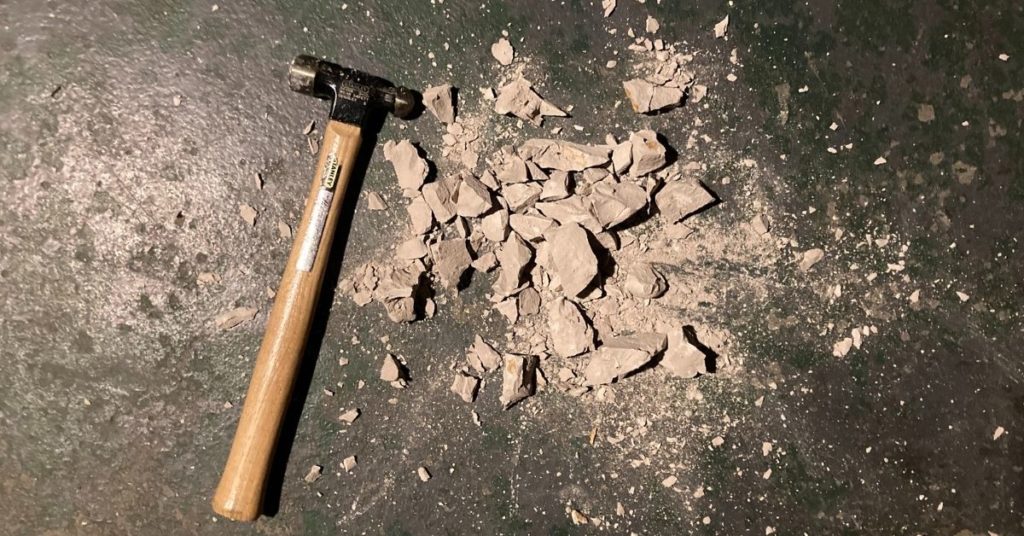
Grog is clay that has been fired and then ground up into a powder. The powder is then added to the clay to make the clay workable.
With grog, clay becomes stronger. Clay with grog is easier to throw with and to build from. It also slows the inevitable shrinking that happens to a clay body during air-drying and firing. Rapid and substantial shrinking can lead to clay cracks.
My recommendation is that a beginner picks a clay with grog in it.
Grogs can come in coarse or fine textures. The finer the grog, the smoother the finish. the coarser the grog, the rougher the finish.
Color and finish
There are a couple of things that will affect the color of your vessel. One way to alter the color is glazing. Another way is how you fire. A unique example is raku pottery. Raku firing can result in a myriad of colors by pulling from the minerals that are in the.
The last thing that affects your color and finish is the type of clay you use. If you don’t intend to glaze your piece, the clay will largely determine the color. Earthenware is typically a red or brown finish. Stoneware is grey. Porcelain, white.
Firing your piece
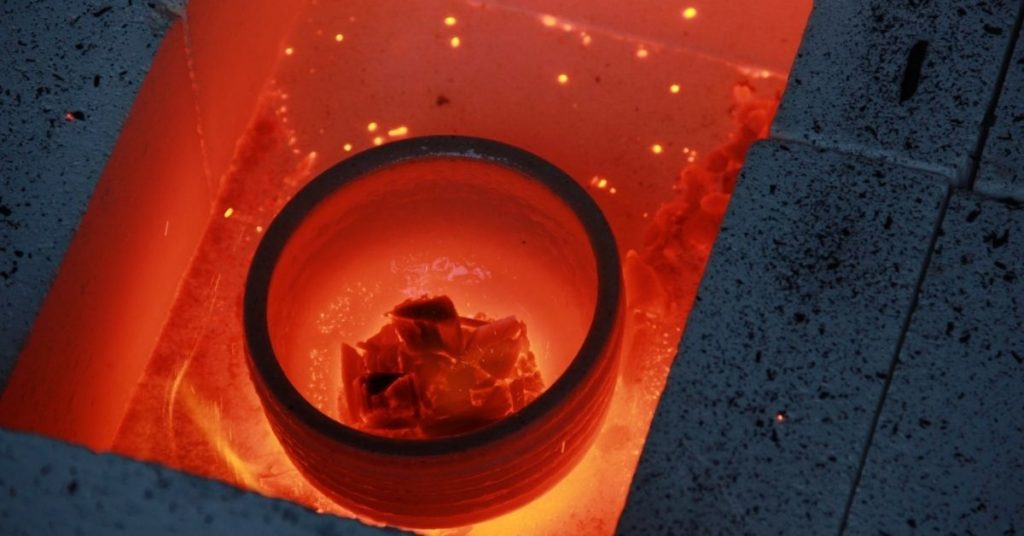
Different clay fires at different temperatures and different times. For instance, earthenware is a low-fire clay. It becomes more durable at lower temperatures. Stoneware and porcelain fire at a higher heat.
Be sure to pick a clay that you can fire. Pick a clay that you don’t have a kiln that can do higher temperatures. You can often read the instructions on a clay package to know what temperature things fire at.
Conclusion
That’s it! Hopefully, this article helps you pick the right clay for your next project. If you have any questions or think we missed an important part, please let us know! Leave a comment or contact us directly at hello@wheelandclay.com.

